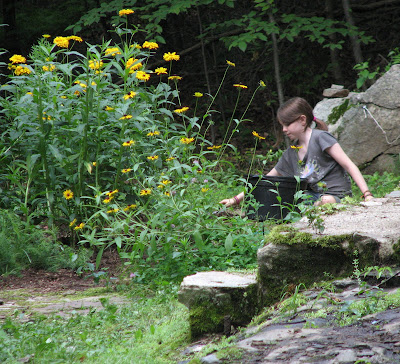Bonus today! The aromatic groundcover I figured was some non-native herb/weed planted by the Eklunds is actually native, and it's functioning nicely as a "lawn." All year I have wondered what was giving off such an aroma while we worked on the rock garden.
















































